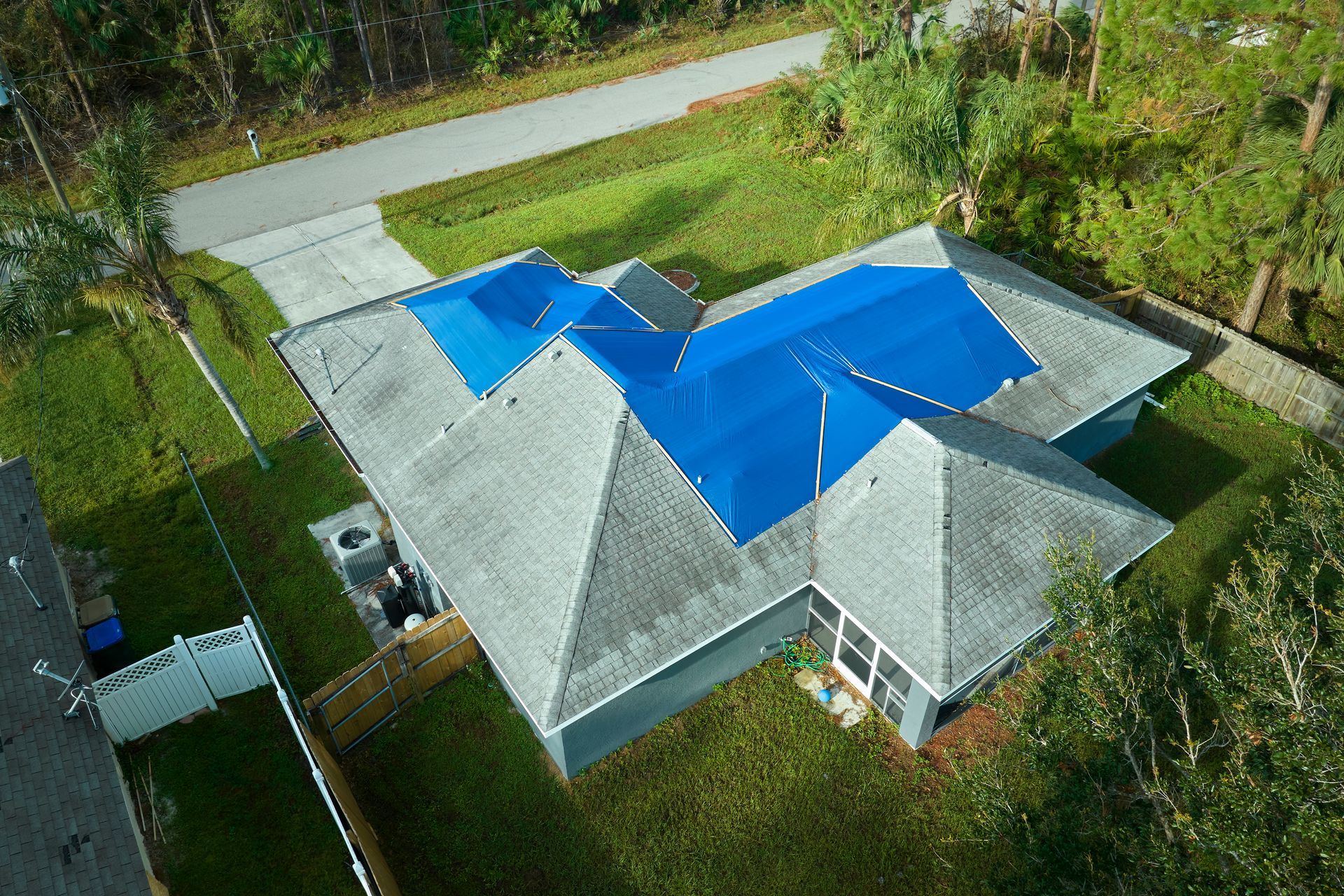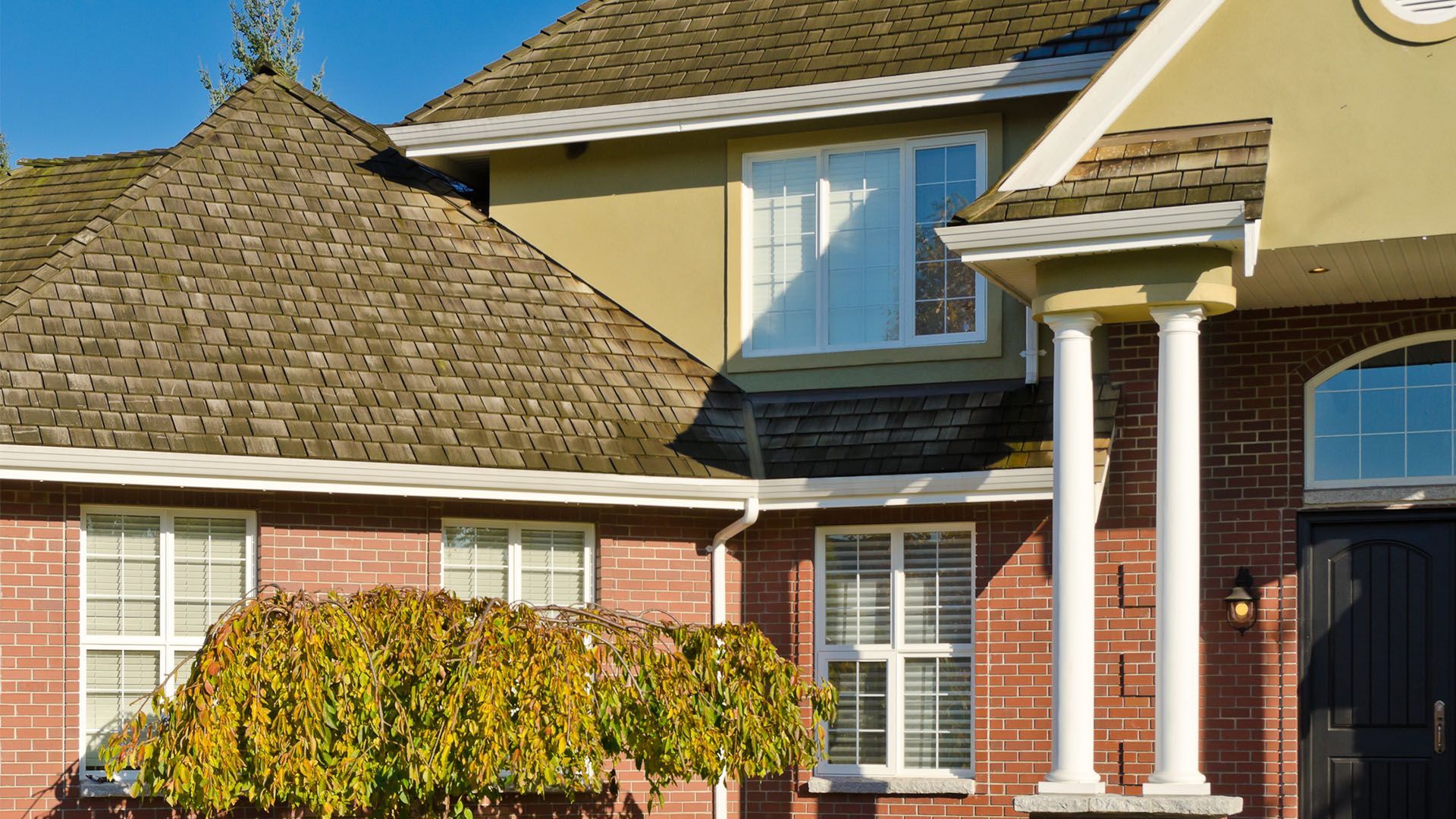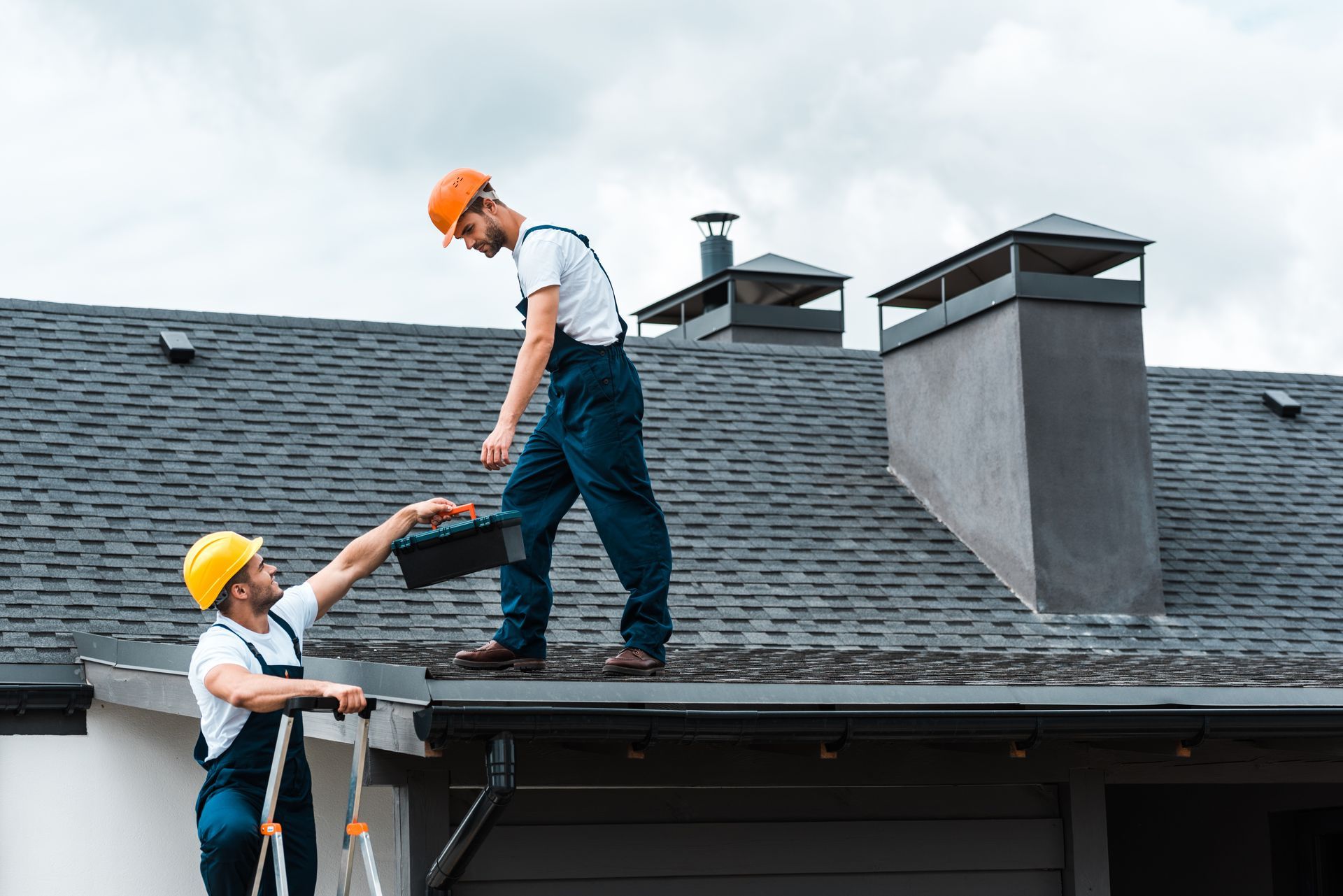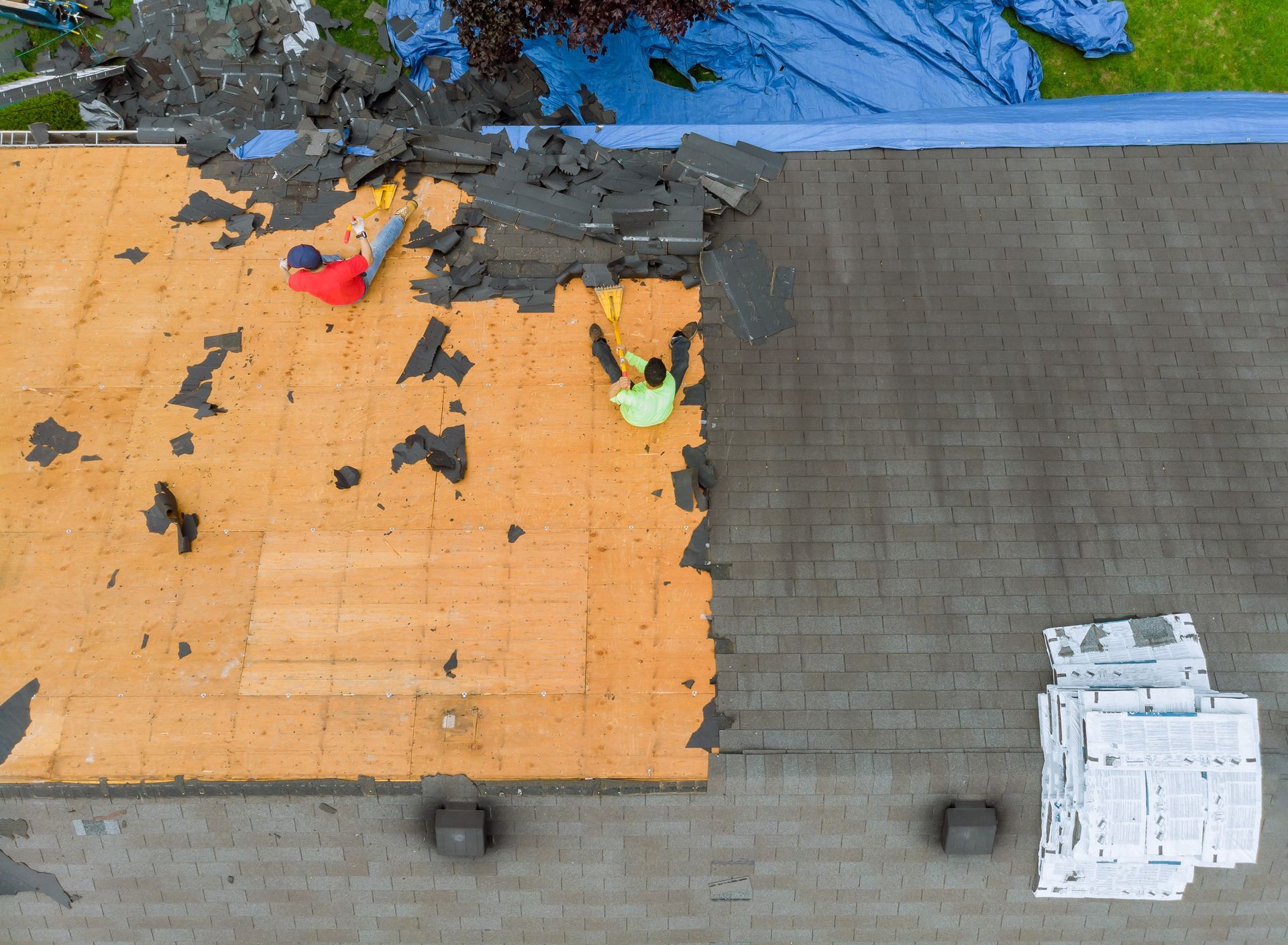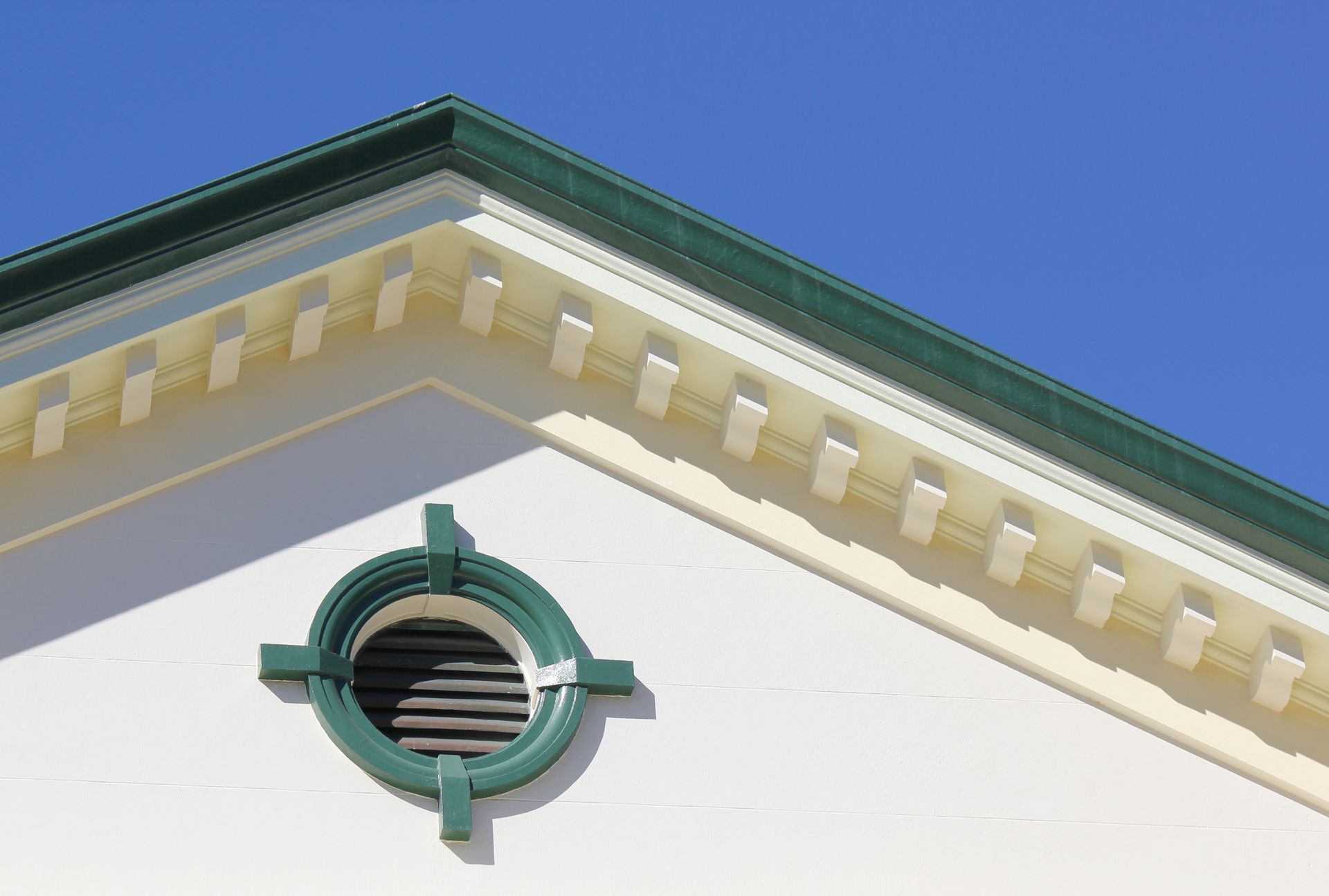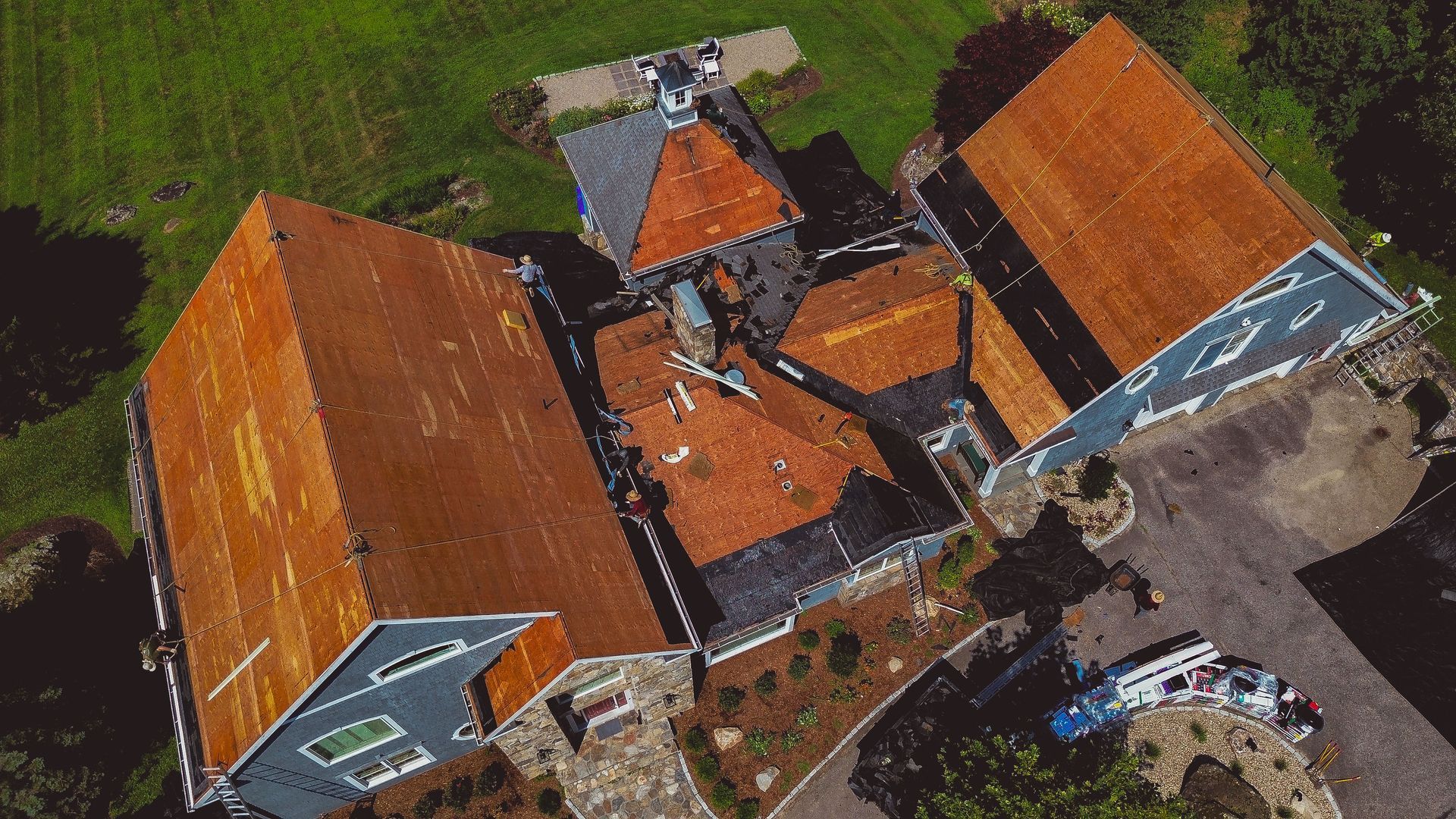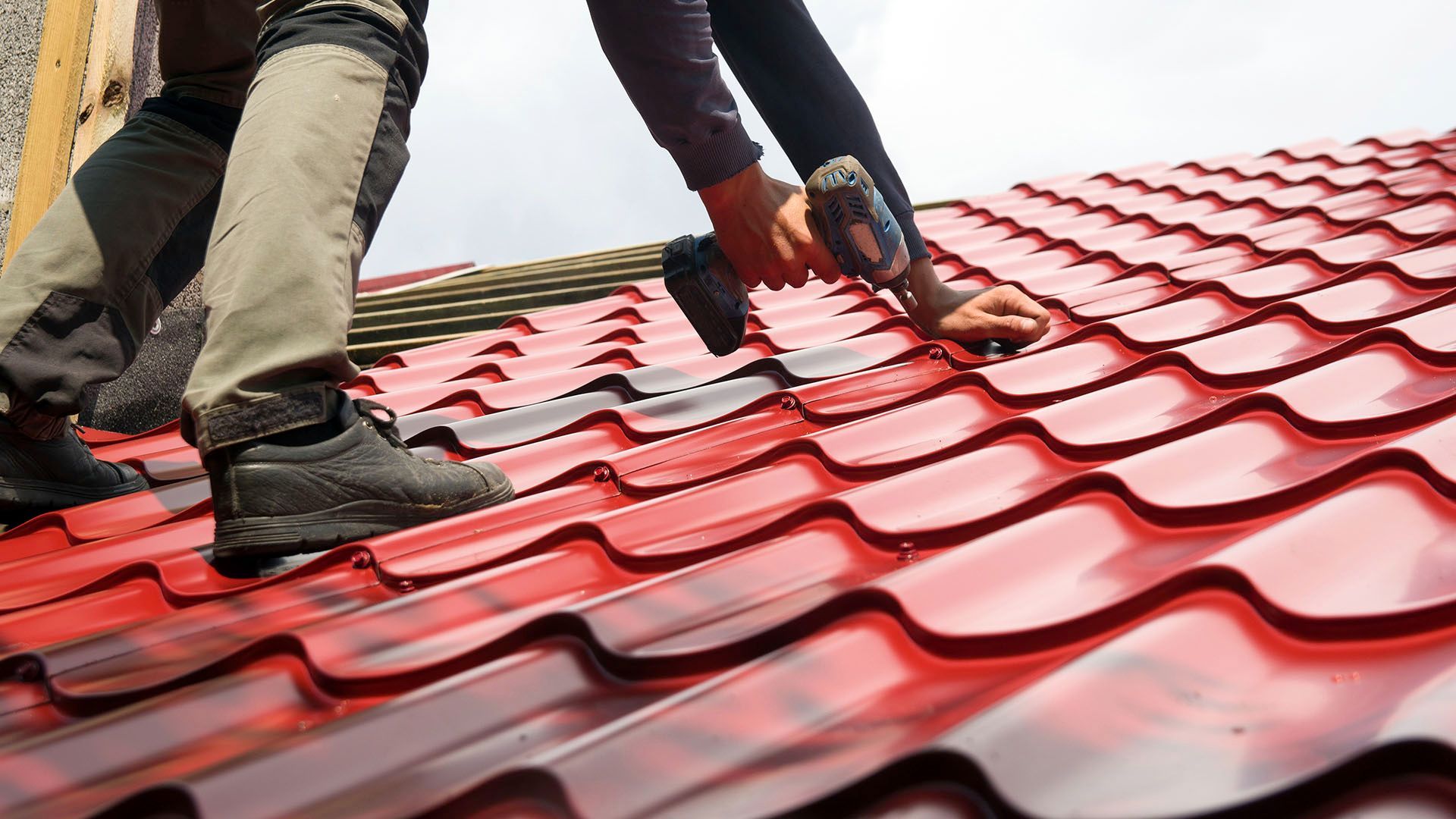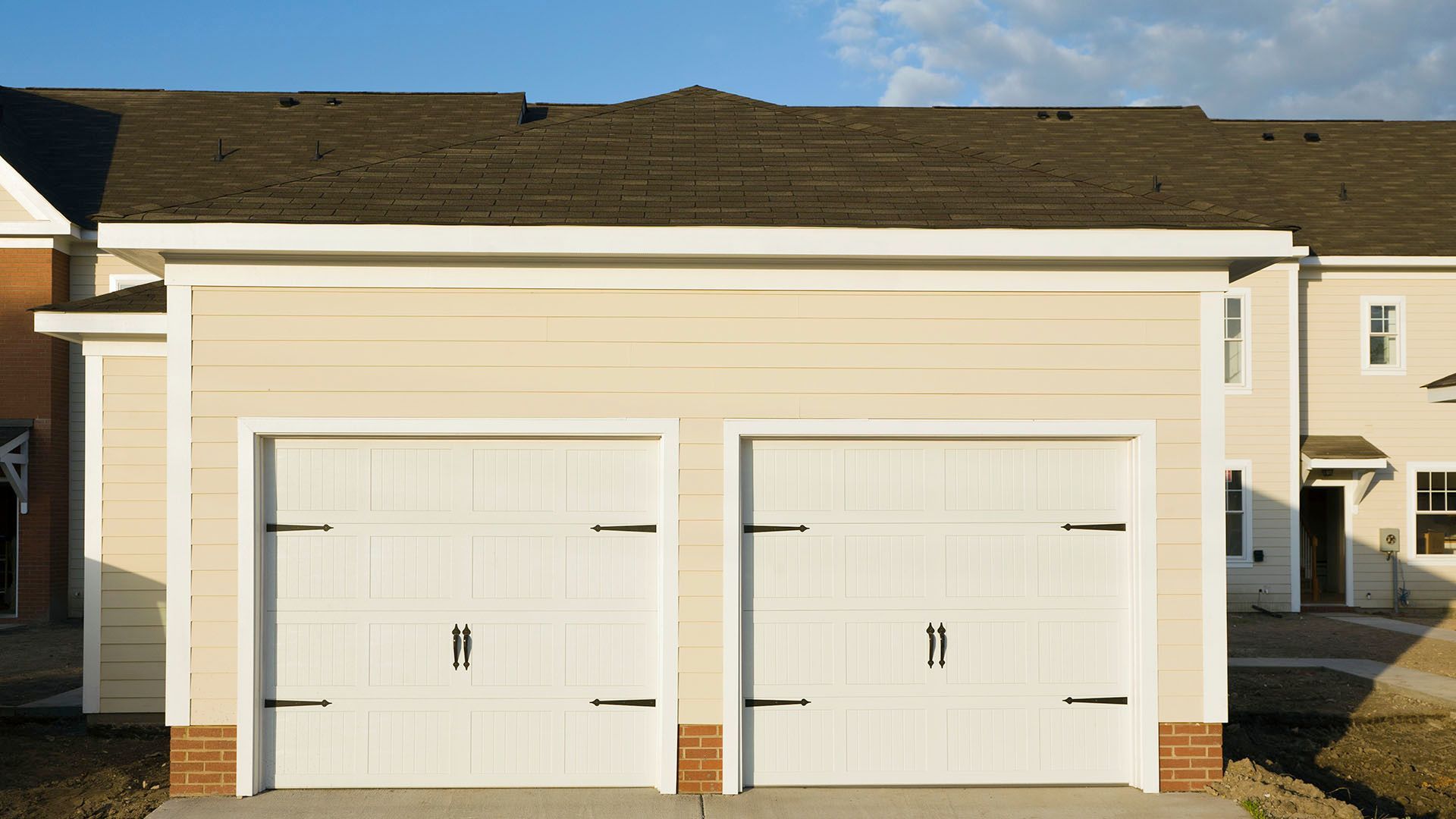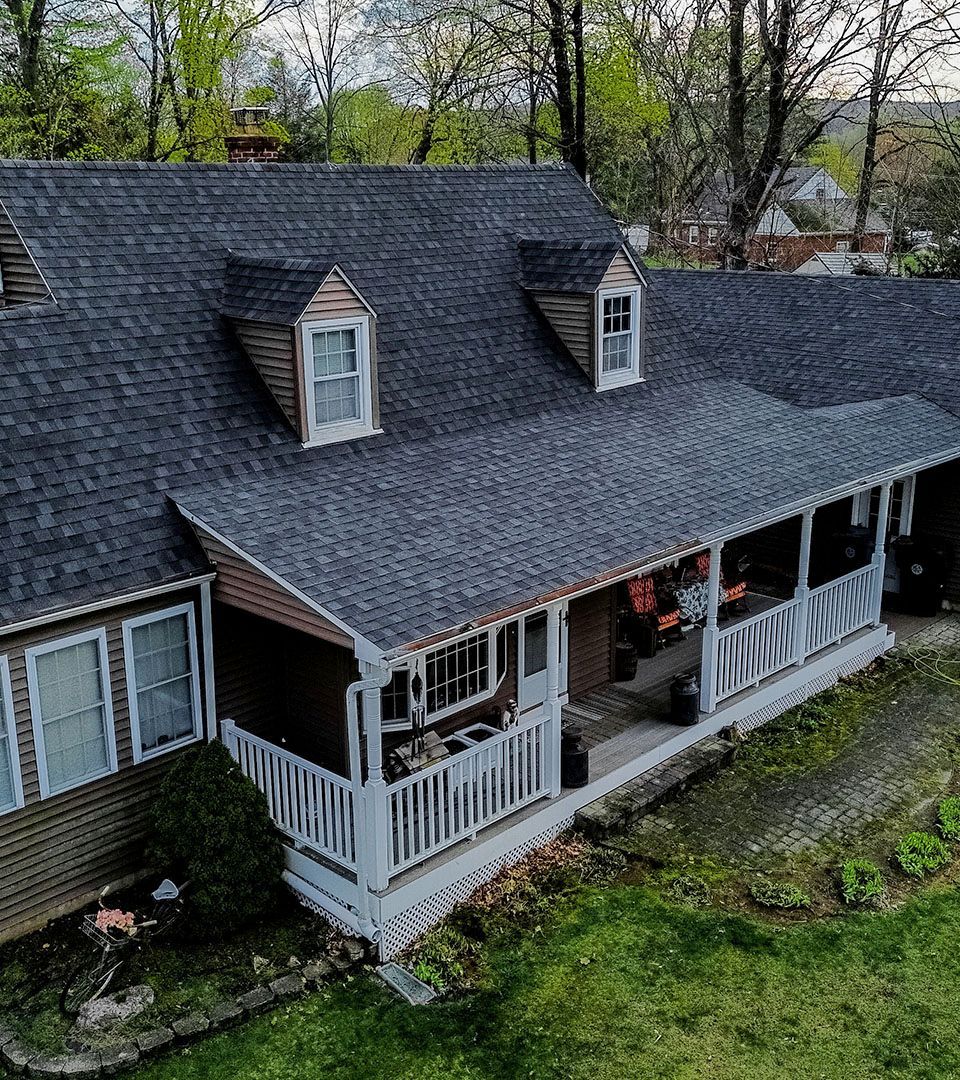How to Cut Corrugated Metal Roofing: Step-by-Step Guide

When it comes to cutting corrugated metal roofing, precision, safety, and the right tools are key. At Carden Home Improvement, we specialize in roofing solutions across Connecticut, with certified experts and a track record of using top-tier products like Tamko. With years of hands-on experience and a 1-Day Roof Replacement guarantee, we understand the importance of clean, accurate cuts for long-lasting roofing installations. In this guide, we'll walk you through everything you need to know about how to cut corrugated metal roofing like a pro.
Safety First
Required PPE
Before you make a single cut, make sure you have the proper safety gear: heavy-duty gloves, safety glasses, hearing protection, and long sleeves to protect your arms from sharp edges and flying debris.
Fire and Spark Precautions
Always work in a well-ventilated area free of flammable materials. If you're using power tools that produce sparks, keep a fire extinguisher nearby.
Safe Handling and Panel Support
Support panels on a stable surface like sawhorses. Use clamps and boards to prevent shifting or kinking while cutting.
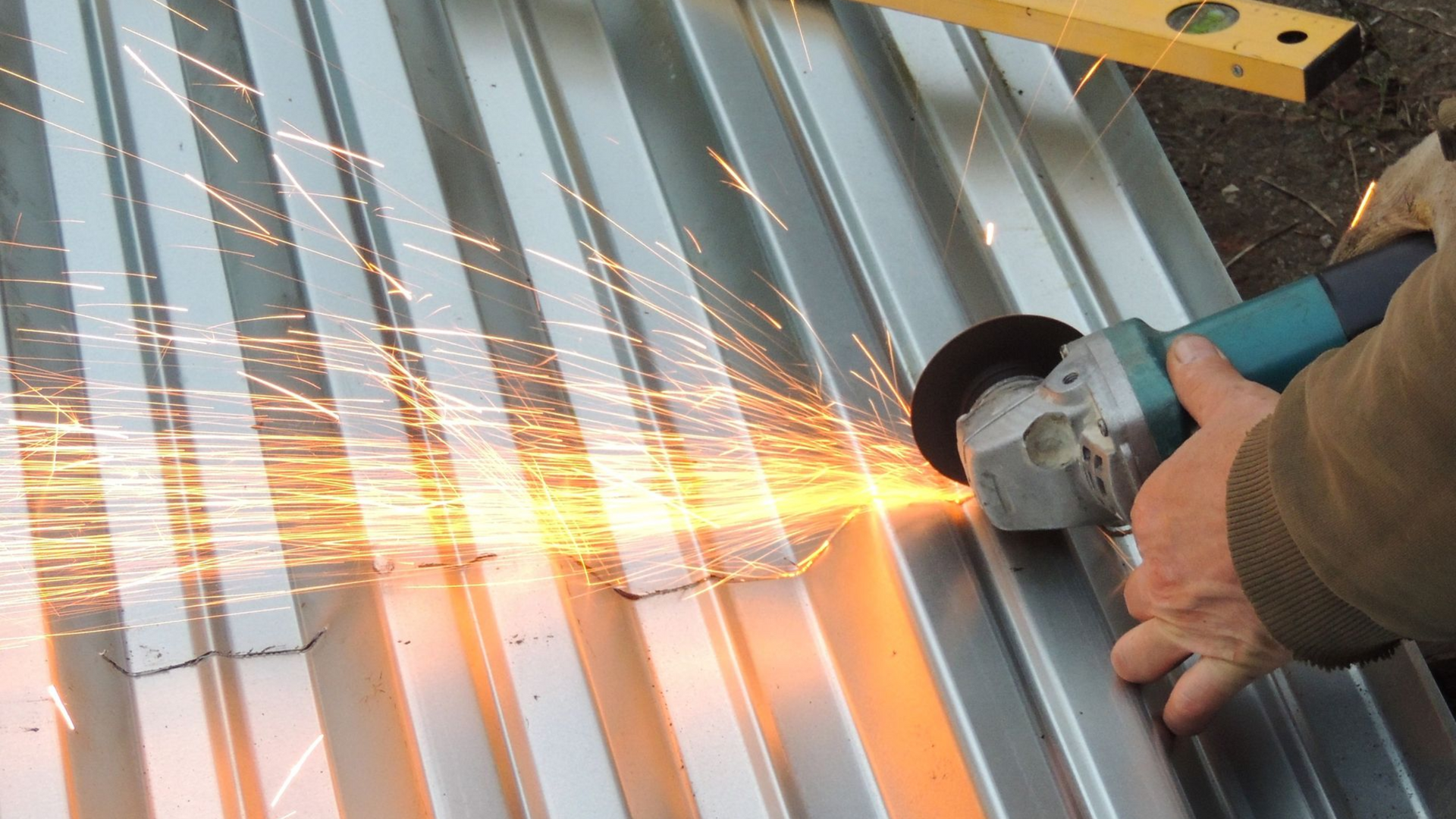
Know Your Panels
Material and Gauge
Know what you're working with. Galvanized steel and aluminum panels have different thicknesses (gauges) that affect how they should be cut.
Corrugation Orientation
Decide if you’re cutting along the ridges or across them. This impacts tool selection and ease of cutting.
Factory Edges vs. Field-Cut Edges
Factory edges are smoother and often coated to prevent corrosion. Field cuts should be treated properly to maintain performance and appearance.
Tools & Blades Overview
Manual Options
- Tin Snips (Straight, Left, Right): Great for short cuts and small jobs.
- Aviation Snips: Useful for curves and angled cuts.
Power Options
- Electric Metal Shears: Fast and precise.
- Nibbler Tool: Ideal for clean cuts with minimal distortion.
- Jigsaw: Best for tight corners or detailed cuts.
- Circular Saw: Great for long straight lines.
- Angle Grinder: Use with care for rough cuts.
Blade Selection
- Choose carbide-tipped or ferrous-metal blades.
- Pay attention to TPI (teeth per inch), kerf width, and RPM limits.
Tool Pros and Cons
Each tool has trade-offs between speed, control, noise, and edge finish. Pick what fits your skill level and project scope.
Marking & Setup
Measuring and Masking
Use chalk lines and measuring tape for accurate layouts. Apply masking tape along the cut line to protect the paint.
Panel Clamping
Secure the panel on sawhorses using clamps and a sacrificial board underneath to protect your tools and prevent bending.
Cutting Guides
Use a metal straightedge or custom template for clean, repeatable cuts.
Step-by-Step Cuts by Tool
Tin Snips
Punch a starter hole if needed. Cut slowly and keep the metal flat to minimize burrs.
Electric Shears/Nibbler
Great for long, straight runs and curved cuts. Keep steady pressure and follow your line.
Circular Saw
Orient the blade correctly and feed steadily. Avoid overheating and paint damage.
Angle Grinder
Use thin-kerf cutoff wheels. Control sparks and wear PPE. Best for small jobs.
Jigsaw
Use fine-tooth metal blades. Ideal for small penetrations and notches.
Special Cuts & Penetrations
Skylights, Vents, and Pipes
Mark cutouts precisely. Drill starter holes before cutting to avoid bending.
Trimming at Roof Edges
Ensure accurate overhangs and lap joints. Make final cuts for eaves, rakes, and ridges.
Around Fasteners
Use tin snips or a nibbler to trim near fasteners and overlaps without distorting the panel.
Finishing the Edge
Deburring
Use a file or flap disc to smooth sharp edges and remove burrs.
Corrosion Protection
Apply touch-up paint to raw metal edges to prevent rust and prolong the life of your roof.
Sealants
Use metal roof-approved sealants around penetrations to ensure a weather-tight finish.
Quality Check & Fitment
Dry-Fit Panels
Test fit your panels to confirm alignment, lap spacing, and proper overlap.
Fastener Check
Ensure enough clearance around trimmed sections for correct fastener placement.
Final Inspection
Inspect all cuts for straightness, burrs, or coating damage.
Common Mistakes to Avoid
Overheating Painted Surfaces
Using high-speed tools without care can scorch or blister paint.
Cutting Unsupported Panels
Always support your material. Unsupported cuts cause warping and jagged lines.
Galvanic Corrosion
Avoid mixing metals (e.g., aluminum with steel) to prevent electrochemical reactions.
When to DIY vs. Call a Pro
Project Complexity
If you're dealing with steep slopes, multiple penetrations, or thicker gauges, consider professional help.
Jobsite Risks
Weather conditions, height, and panel size all factor into safety. Know your limits.
Professional Tools and Warranties
Contractors like Carden Home Improvement bring commercial-grade tools, fast service, and warranty-backed work.
Get Local Help in Connecticut
If you're in Plainville, Southington, Bristol, or surrounding towns, contact Carden Home Improvement for a quote. We offer:
- Expert
metal roofing services
- 1-Day Roof Replacement
- Tamko Diamond Warranty options
- Flexible financing via Hearth
For any roof repair needs or emergency situations, our team is ready to help. We also handle commercial roofing projects with the same level of expertise and attention to detail.
Need help? Call us today or schedule a free consultation to get your project done right.
Frequently Asked Questions
What's the best tool for cutting corrugated metal roofing?
For most DIY projects, electric metal shears or a nibbler tool provide the best balance of precision, speed, and clean cuts. Tin snips work well for small jobs and detail work, while circular saws are ideal for long straight cuts. Avoid angle grinders unless you're experienced, as they can easily damage the paint coating and create rough edges.
Can I cut corrugated metal roofing with a regular saw blade?
No, you should never use wood-cutting blades on metal roofing. Always use carbide-tipped or ferrous-metal specific blades designed for cutting metal. These blades have the proper tooth configuration and materials to cut cleanly without overheating or damaging the metal coating.
How do I prevent rust after cutting corrugated metal?
Apply touch-up paint to any raw metal edges immediately after cutting. The factory coating protects against corrosion, but field cuts expose bare metal that's vulnerable to rust. Use paint that matches your panel's coating system, and ensure the surface is clean and dry before application.
Should I cut corrugated metal face-up or face-down?
Cut face-down (painted side down) when possible to minimize visible scratches on the finished surface. Place a sacrificial board underneath to protect your cutting surface and prevent the metal from bending. This orientation also helps reduce paint chipping along the cut line.
When should I hire a professional instead of cutting myself?
Consider hiring a professional for projects involving steep roofs, multiple complex penetrations, panels thicker than 26 gauge, or if you're uncomfortable working at height. Professional contractors have commercial-grade tools, experience with tricky cuts, and can ensure proper safety protocols while maintaining warranty coverage.
